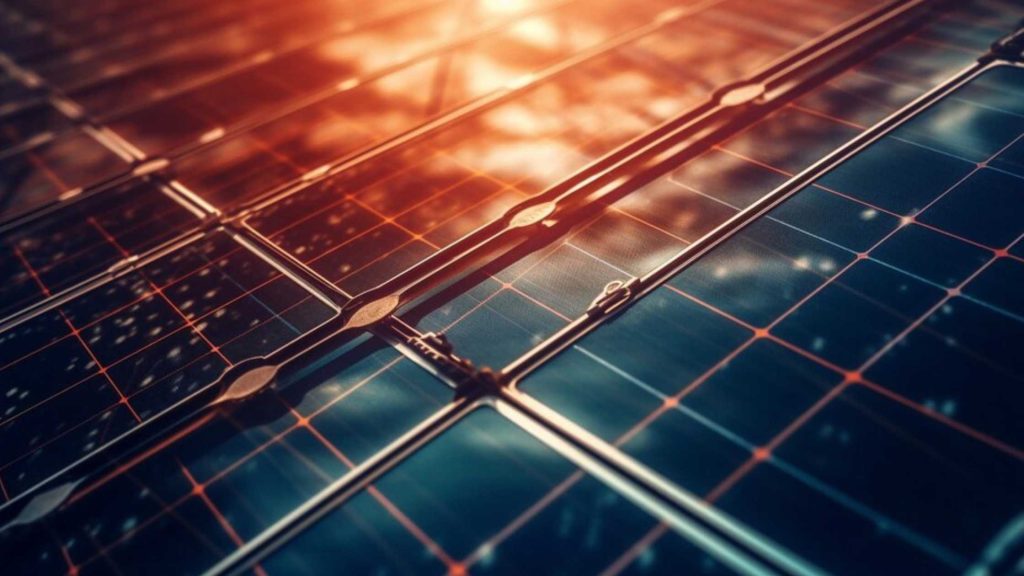As the twenty-first century progresses, the urgency to address energy sustainability and climate change continues to grow. At the forefront of this global shift are Solar Energy Innovations, which promise a cleaner and more sustainable future. The energy landscape is rapidly evolving, driven by technological advancements, supportive government policies, and a surge in environmental awareness. This blog explores the Future of Solar Energy Innovations, diving into key breakthroughs and emerging ideas set to shape the sector in the coming decades.
The Current State of Solar Energy
Before exploring upcoming trends, it’s essential to understand the current status of solar energy. Over the last decade, solar power has seen exponential growth. According to the International Energy Agency (IEA), global solar photovoltaic (PV) capacity surged from 40 gigawatts (GW) in 2010 to over 710 GW by 2020. This remarkable rise is fueled by falling costs, supportive regulations, and key Solar Energy Innovations.

Since 2010, solar PV module prices have dropped by more than 80%, making solar one of the most cost-effective energy sources available. Technological innovations, especially in monocrystalline and polycrystalline cell designs, have significantly enhanced energy conversion rates.
Key Innovations in Solar Technology
1. Perovskite Solar Cells
Perovskite Solar Cells Among the most promising Solar Energy Innovations are perovskite solar cells. These materials, characterized by their unique crystal structure, offer high efficiency and low production costs. Lab tests have shown efficiencies surpassing 25%, potentially exceeding those of traditional silicon-based cells.
Perovskite cells are also highly adaptable, supporting transparent and flexible applications. This paves the way for building-integrated photovoltaics (BIPV), allowing entire buildings to generate power through facades and windows.
2. Tandem Solar Cells
Tandem Solar Cells Tandem cells combine multiple layers of solar cells with varying bandgaps. By capturing different segments of sunlight, tandem cells can achieve higher efficiencies than single-junction counterparts. For example, stacking a perovskite layer over a silicon base has yielded efficiencies exceeding 30%.
These Future of Solar Energy Innovations could lead to enhanced power production in both large-scale solar farms and urban environments with limited space.
3. Bifacial Solar Panels
Bifacial Solar Panels Bifacial panels collect light from both front and rear surfaces. By using reflected light from surfaces like snow or sand, these panels can generate up to 30% more energy than monofacial panels.
This Solar Energy Innovation is particularly beneficial in high-albedo environments, providing a robust solution for increasing output without expanding the installation footprint.
4. Solar Tracking Systems
Solar Tracking Systems To optimize panel orientation, solar tracking systems adjust angles throughout the day. Single-axis and dual-axis trackers can boost energy generation by 15–30% compared to fixed systems.
Improved algorithms and materials are increasing their reliability and affordability, making them a key player in the Future of Solar Energy Innovations.
5. Solar Storage Solutions
The intermittent nature of solar energy—available only throughout the day—is one of its main problems. Good energy storage options are necessary to guarantee a steady and dependable power source. Advances in battery technology, like flow and lithium-ion batteries, are increasing the cost-effectiveness and efficiency of solar energy storage.
Cutting-edge technologies like solid-state batteries, which provide greater energy densities and longer lifespans, could completely transform solar storage. Furthermore, combining solar energy with cutting-edge grid management technologies and other renewable energy sources, like wind, can assist in balancing supply and demand and producing a steady amount of electricity.
Emerging Trends in the Solar Industry
1. Decentralized Solar Power
The process of producing electricity at or close to the point of use rather than at a centralized place is called distributed production or decentralized solar power generation. The installation of rooftop solar panels and small-scale solar systems by residential, commercial, and industrial customers is driving the pace of this movement.
Decentralized solar energy has several benefits, such as lower transmission losses, better energy security, and greater resilience to grid outages. It also encourages energy independence and sustainability by allowing people and communities to take charge of their energy requirements. These are among the most practical and scalable Solar Energy Innovations contributing to the Future of Solar Energy Innovations.
-
Solar Microgrids
Microgrids are localized, small-scale energy systems that can function separately and with the larger grid. Solar-powered microgrids are popular in isolated and off-grid locations because they offer dependable and sustainable energy solutions without regular grid infrastructure.
Energy storage and backup generators are frequently used in these microgrids to guarantee a steady electricity supply. They are instrumental in areas vulnerable to disasters, as they may support relief operations and supply vital electricity during catastrophes. These Solar Energy Innovations are crucial to the Future of Solar Energy Innovations in vulnerable regions.
-
Agrivoltaics
Agrivoltaics, often known as Agri solar, is the practice of simultaneously using land for agricultural and solar power generation. This creative method maximizes land utilization by putting solar panels overgrazing or farming regions, giving farmers extra revenue streams.
According to research, some crops can profit from the partial shade solar panels create, lowering water evaporation and shielding plants from scorching temperatures. Additionally, agrivoltaics encourage the coexistence of food and energy production and lessen problems arising from land use. This practice reflects one of the most balanced Solar Energy Innovations enhancing food-energy synergy in the Future of Solar Energy Innovations.
-
Floating Solar Farms
Installing solar panels on bodies of water, such as reservoirs, lakes, and even seas, is known as floating solar farms or floatovoltaics. This trend is becoming more popular in areas with a high population density and limited land availability.
Reduced land use, higher energy generation from the cooling effect of water, and less water evaporation from reservoirs are just a few advantages of floating solar farms. Additionally, they can be combined with already-existing hydroelectric facilities to offer an additional energy source. These are key Solar Energy Innovations unlocking new space-efficient solutions in the Future of Solar Energy Innovations.
-
Solar-Powered Desalination
Producing drinkable water by solar-powered desalination is becoming viable as freshwater scarcity becomes a primary global concern. Although conventional desalination methods require a lot of energy, they can have a significant adverse environmental impact when combined with solar energy.
The efficiency of desalination systems is increasing because of advancements in solar thermal and photovoltaic technology, which increases their viability for broad use. In desert areas with plenty of sunshine, solar-powered desalination can produce clean water for industrial, agricultural, and drinking purposes. This is one of the most impactful Solar Energy Innovations addressing multiple global crises and showcasing the Future of Solar Energy Innovations.
Policy and Market Dynamics
1. Supportive Government Policies
Government policies greatly influence the use of solar energy. Supportive policies, including feed-in tariffs, tax breaks, and subsidies, are being implemented in many nations to promote the installation of solar power plants. Targets for renewable energy and carbon pricing also encourage companies and private citizens to invest in solar energy.
Policy frameworks will continue to change if governments commit to cutting carbon emissions and switching to renewable energy. Like the Paris Agreement, international accords promote international cooperation and establish challenging climate targets to stimulate additional solar energy investment. These policy shifts are vital to scaling Solar Energy Innovations and realizing the Future of Solar Energy Innovations.
2. Corporate Sustainability Initiatives
Corporate sustainability programs are more significantly impacting the solar energy industry. Many businesses are committing to renewable energy goals and making solar installation investments to lessen their carbon footprint. Corporate power purchase agreements, or PPAs, are gaining traction for solar developers to secure steady income streams over the long run.
Major IT businesses, retailers, and manufacturers are in charge of integrating solar energy into supply chains and operations. These programs support the solar industry’s overall expansion and improve business sustainability. These efforts fuel the demand and development of Solar Energy Innovations central to the Future of Solar Energy Innovations.
3. Financial Innovations
Innovative financing models—such as solar leases, PPAs, community solar programs, and green bonds—are democratizing access to solar technology. Crowdfunding and Energy-as-a-Service (EaaS) models allow users to pay for power rather than owning infrastructure.
Thanks to the emergence of energy-as-a-service (EaaS) models, consumers can now pay for energy services instead of owning and maintaining solar infrastructure. These financial innovations are driving the use of solar energy across multiple sectors and growing markets. Such market mechanisms are indispensable in bringing Solar Energy Innovations to life, influencing the Future of Solar Energy Innovations globally.
The Road Ahead: Challenges and Opportunities
-
Technological Challenges
Technological Challenges To fully realize the Future of Solar Energy Innovations, technical hurdles like efficiency degradation, material stability, and durability must be overcome. Perovskite cells, though promising, face concerns over longevity and environmental safety.
Energy storage continues to be a significant concern because controlling the intermittent nature of solar electricity requires effective and affordable storage technologies. Research and development must continue to guarantee a steady supply of solar energy, battery technology, and grid integration.
-
Grid Integration
As solar energy penetration rises, large-scale solar power integration into current networks poses technological and operational issues. Achieving increasing proportions of solar energy requires improving infrastructure, managing variability, and guaranteeing grid stability.
Optimizing solar integration requires advanced forecasting techniques, demand response systems, and intelligent grid technology. Utilities, regulators, and technology providers must collaborate to create resilient and adaptable energy systems.
-
Environmental and Social Considerations
Even though solar energy has many positive environmental effects, it is crucial to consider any potential adverse social and ecological effects. Resource extraction and waste management are difficult in manufacturing and disposing of solar panels. Reducing solar energy’s environmental impact requires developing recycling programs for end-of-life panels and promoting sustainable production processes.
Another crucial factor is social fairness, which ensures that all communities—including the underprivileged and marginalized—can benefit from solar energy. Laws and initiatives that support community involvement and equitable solar deployment can address these issues.
-
Market Dynamics
Several factors, such as shifting policy, improving economic conditions, and technological developments, impact the solar energy market. Long-term prosperity and investor confidence depend on preserving steady and predictable policy frameworks.
Disruptions to the global supply chain, like the COVID-19 epidemic, emphasize that solar component suppliers must have robust and diverse supply networks. Strengthening domestic manufacturing capacities and lowering reliance on single-source suppliers can increase the stability of the solar business.
Conclusion
The future of Solar energy Innovations is promising because of ongoing developments and shifting market conditions. Improvements in energy storage, grid integration, and solar cell technology are opening the door to a more sustainable and effective energy system. The potential for solar energy deployment is growing thanks to emerging trends, including floating solar farms, agrivoltaics, and decentralized solar power.
Worldwide use of solar energy is rising thanks to creative financing methods, business sustainability programs, and supportive government legislation. Even if there are still obstacles to overcome, achieving solar energy’s full potential will require continued research and development and cooperative efforts between the public and private sectors.
The shift to a solar-powered future offers the potential for a more fair, resilient, and sustainable energy environment. Unlocking solar energy’s revolutionary potential and building a sustainable future for future generations will depend on seizing the opportunity and overcoming the obstacles.


